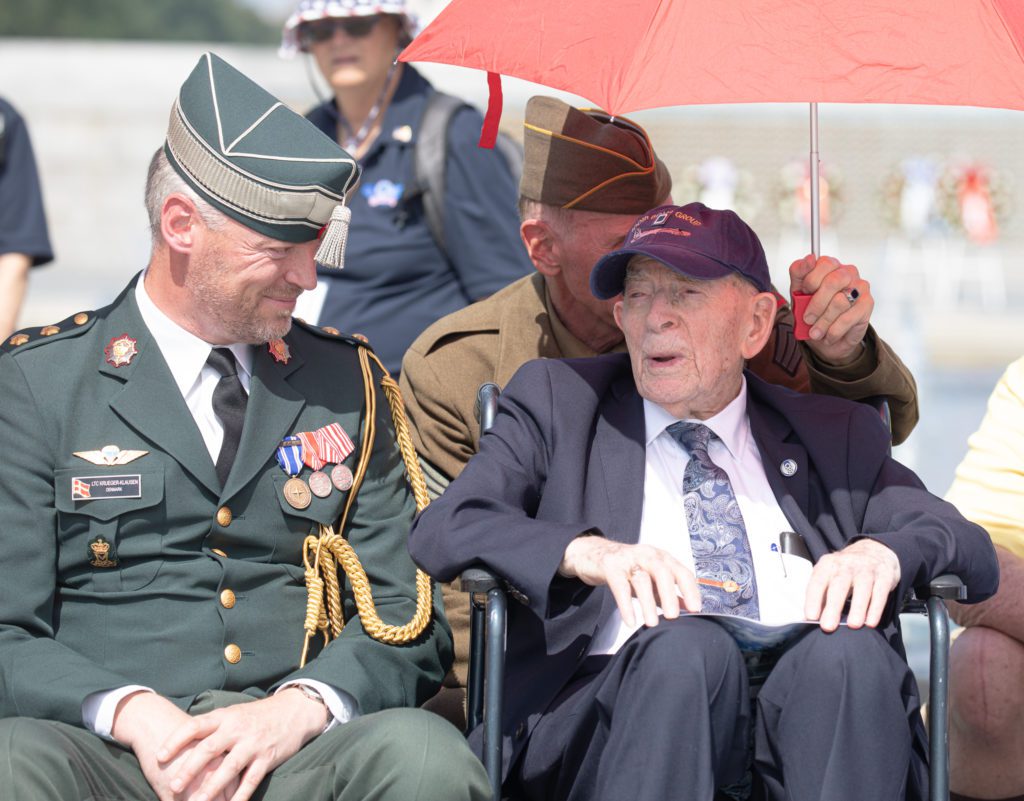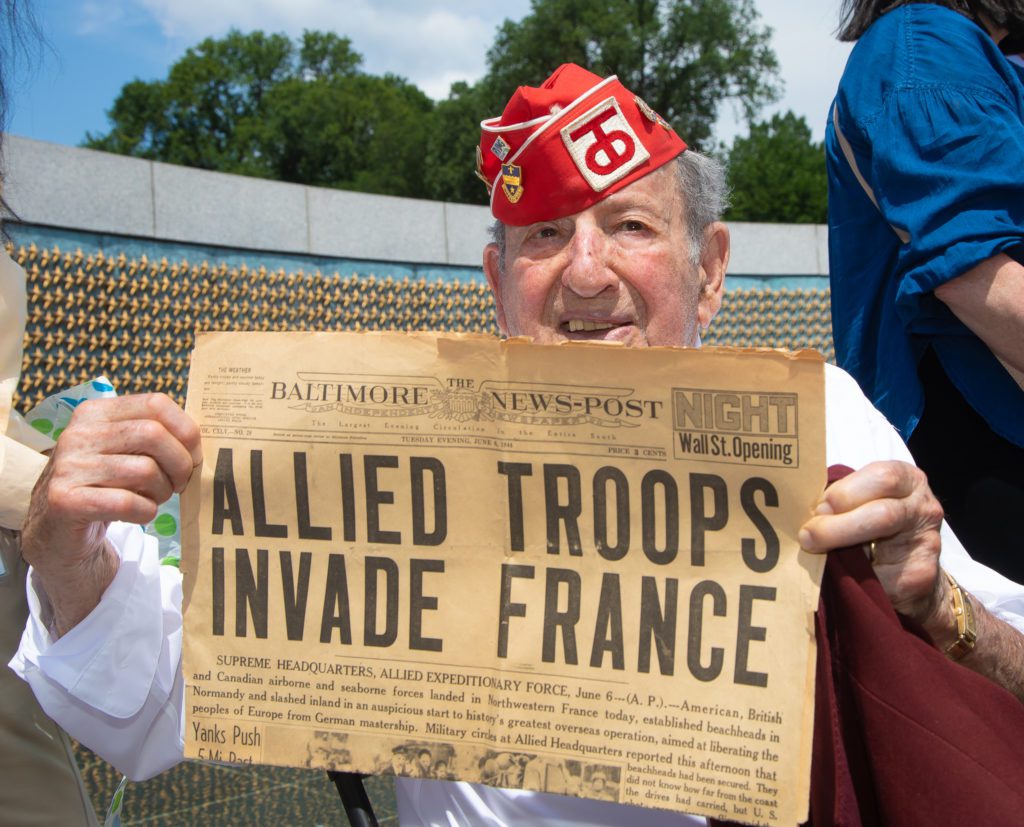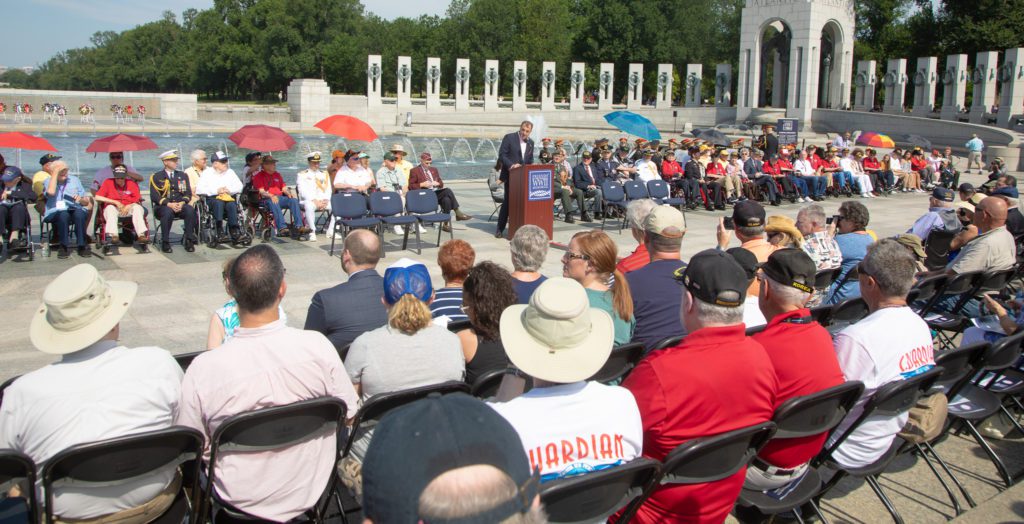The Sixth of June
By • June 6, 2019 0 989

This Thursday, June 6, they will gather to remember a murky day exactly 75 years earlier, gathering among the beaches, the few remaining men from America and across Europe who survived that historic day.
D-Day, the Sixth of June, the invasion of Normandy, Operation Overlord, the first day of the grand effort to take back France and Europe from the soldiers and armies of Hitler’s Nazi Germany.
There are several ways of remembering this event, and no doubt people from different nations will remember it in different ways. We can think of it in terms of the size of the effort and the numbers — unprecedented — involved. We can conjure up tanks, airplanes, armored cars, landing vehicles, M1 rifles, strategies, uniforms, the sounds made by bullets and barrages.
We can think of it in terms of the experiences of the soldiers who fought there, their stoic insistence and endurance, their fear and terror jumping into the unknown, souls running in heavy, wet boots, moving into a hail of fire.
We know all this and even, at certain times, seem to remember what happened.
This we know from books and encyclopedias. We know some names, numbers of men and the stuff of materiel and weapons, the weather — awful, pretty much. A grand army of allies participated in what was called Operation Overlord, 175,000 in all, some 57,000 or more Americans, including airborne troops that landed the day before the full attack. The number of American casualties varied, but they were above 2,000 on the first day, much of it coming on the heavily resisted Omaha Beach.
The attack was a success in that it landed the soldiers who stayed there, never retreated and gradually rose up off the beaches, into the hedgerow battles, eventually and finally gaining the liberation of Paris.
We know all this. We have the famous picture of an open landing craft, soldiers vaguely seen as dark figures in the water, a landscape with threatening clouds signifying the unknown.
We have Gen. Dwight David Eisenhower in overall command, encouraging the troops and, in retrospect, showing the finest quality that he had both in Europe and as president: the certainty and leadership he displayed in bringing together generals — the difficult Monty, the inimitable Charles “Je Suis France” de Gaulle — for a united effort.
They will come to the cemeteries, the beaches, the remaining veterans. There are so few now and there will be fewer still until there will be none left to commemorate.

Robert Levine was just 19 when his 90th Infantry Division was overcome by German soldiers during the Battle of Normandy. Minus a leg, he spent the next three months in a German POW camp. Photo by Jeff Malet.
But we know them.
Those that came back brought their experience with them. It lingered in the loud memory of what we think of as the best we are — not just “The Greatest Generation,” but soldiers who exploded into the world, which enlarged the young Americans in return.
We know this because we read the books: “The Longest Day” by Cornelius Ryan and “D-Day: The Battle for Normandy” by Antony Beevor. And we have the movies. 20th Century Fox’s Darryl Zanuck gambled his studio on filming “The Longest Day” as a black-and-white epic, and it worked (if “Cleopatra” did not). Stephen Spielberg’s more recent “Saving Private Ryan” focused on the individual suffering of the American soldier, the noncoms and privates who endured with a remarkable tenacity, soul and bravery.
Some say that June 6, 1944, was America’s entrance as the major player in the world. Truly the longest day, it is with us still.

Veterans of WWII are honored in a solemn ceremony to commemorate the 75th anniversary of D-Day at the World War II Memorial. Photo by Jeff Malet.

